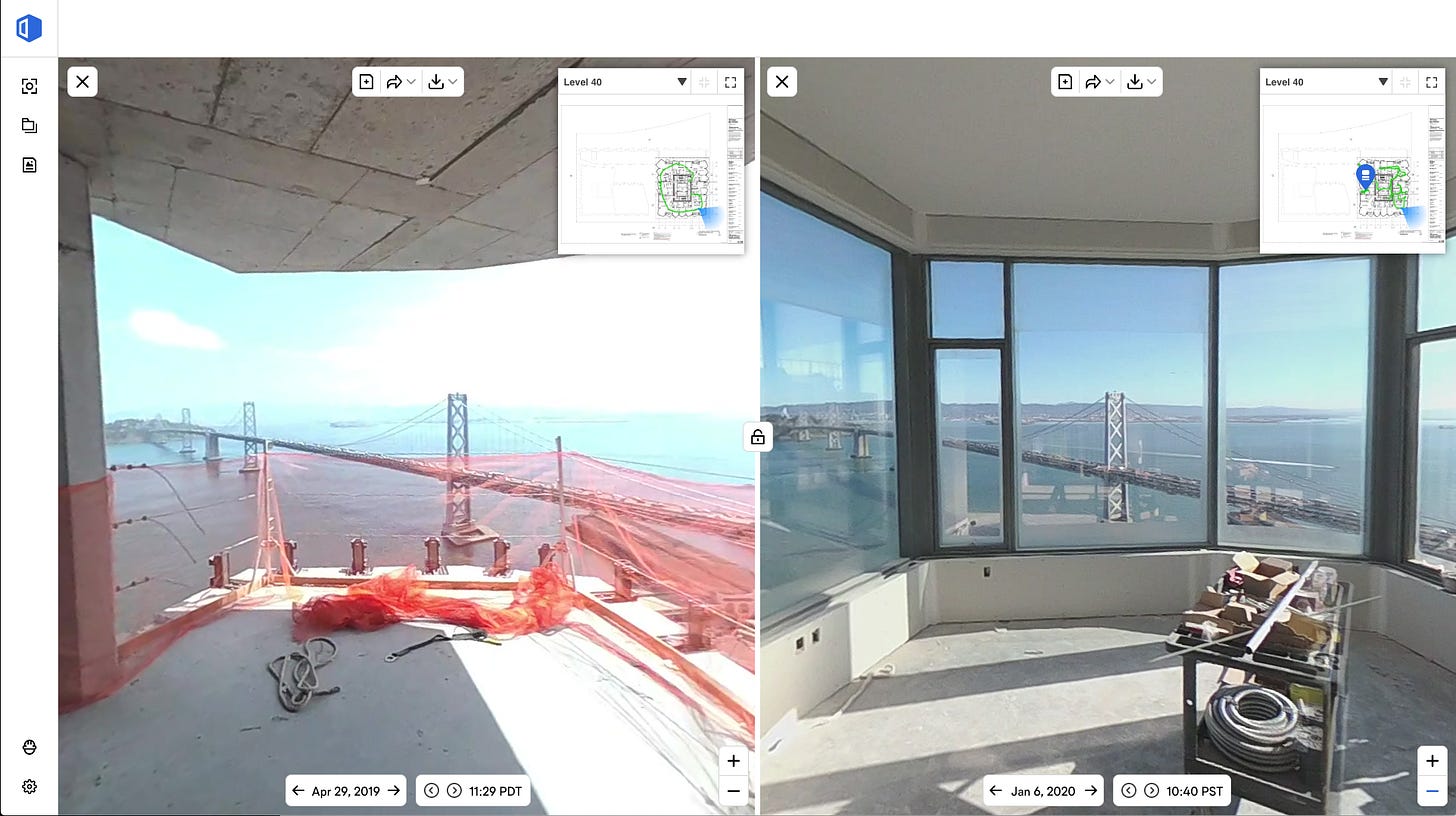Walk The Site From Your Seat: OpenSpace
OpenSpace makes it easy for builders to capture construction progress
OpenSpace automates digital site walks allowing builders to create comprehensive captures of construction in progress.
Digital Hyperlocal
Building teams can come from around the world. Architects in New York, engineers in London, interior designers in Barcelona, to build a building in Hong Kong. The act of building is hyperlocal. Crews need to build the building on the ground where it will stand. Design increasingly happens in digital space, but construction is local and physical. The best way to understand if design intent is translated into constructed reality is to visit the site.
Site observations are how designers get feedback on whether the project is built to design intent. Just as drawings communicate design intent to builders, the construction site communicates building progress to the project stakeholders. Spending every moment on site observing every piece of work is impractical. It’s also a burden on construction crews, who need to accommodate interruptions in their work. Yet, this feedback loop is crucial.
OpenSpace leverages spherical cameras and other reality capture technology to construct digital walkthroughs of the construction site. The capture is done by strapping a camera to a helmet and walking the site. OpenSpace then assembles these captures on top of floorplans, giving a comprehensive spatial understanding of the site in progress.
Builders can perform full progress captures to share with project stakeholders. Whereas traditional cameras only capture specific points of interest, spherical cameras capture everything in view. Remote users can virtually walk the site, rotating their viewpoint to their specific needs.
Comparing Intent and Reality
OpenSpace is a communication tool of the digital construction generation. While building information modeling is a rich information model of the design intent, reality capture maps that intent onto construction progress. This collapses the interpretation needed to go from drawing to reality, and reality back to drawing. With the model and photo side by side, the designer and builder can easily understand progress and make decisions on next steps.
Beyond a communication tool, OpenSpace is also a record of truth. By creating timestamped snapshots of the whole project, we know exactly what was built, when, and how. These photographic records are invaluable in when disagreements later arise.
Get More From Your Build
An “as built” drawing or model is documentation of how the building is actually constructed. This is necessary because there’s deviations between the documented design intent and what’s actually put in place. As building operations become more and more digitized, having a model closely match reality becomes more important than ever (digital twins). Construction progress documented is a powerful communication tool during the build, but it also has archival value after the build. Just like how laser scanning inadvertently provided invaluable information for the Notre Dame reconstruction, information captured by OpenSpace could prove useful later in the building lifecycle. While its business is focused on the construction phase for now, there could be sustainable value for OpenSpace to build a continuous building record.






